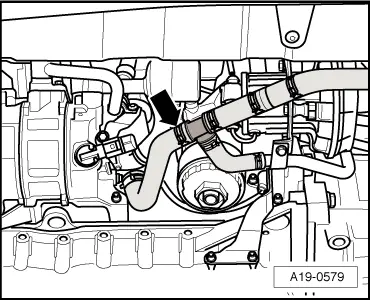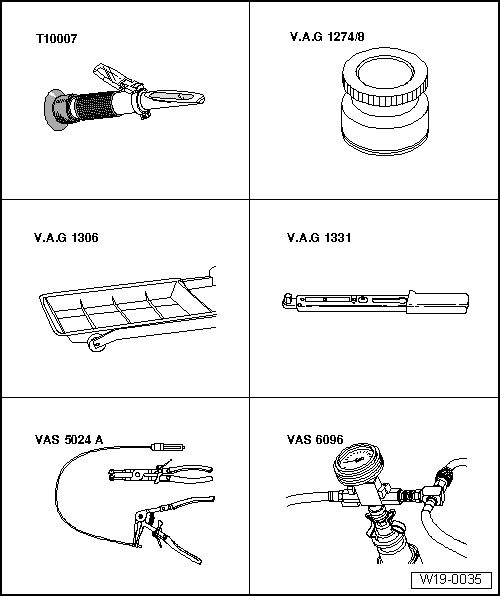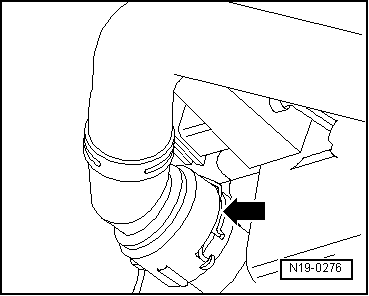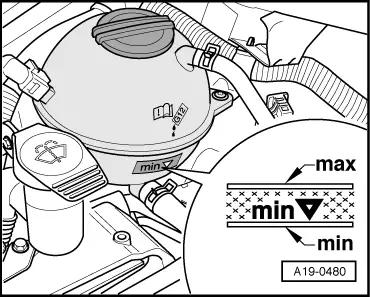| –
| Remove additional bottom coolant hose to continued coolant circulation pump -V51--arrow- and allow remaining coolant to drain out. |

Note | Follow disposal regulations for coolant! |

Caution | For mixing, only potable water may be used. Soiled water does not have the required quality to ensure the coolant's function. |
|

Note | t
| In vehicles as of model year 2008, only G 12 plus-plus according to TL VW 774 G may be used as coolant additive. |
| t
| Up to and including model year 2007, coolant additive G 12 plus according to TL VW 774 F and G 12 plus-plus according to TL VW 774 G can be used. |
| t
| The coolant additive G 12 plus-plus can be mixed with the previous coolant additive G 12 plus. Identification: both are coloured purple. |
| t
| Coolant additives marked „according to TL VW 774 G“ or „according to TL VW 774 F“ prevent frost, corrosion damage and scaling Such additives also raise the boiling point of the coolant. Therefore, the cooling system must be filled all year round with coolant additive. |
| t
| Because of its higher boiling point, the coolant improves engine reliability under heavy loads, particularly in countries with tropical climates. |
| t
| The frost protection must be guaranteed to approx. -25 °C. In countries with an arctic climate, to approx. -35 °C. |
| t
| The coolant concentration must not be reduced by adding water even in warmer seasons and in warmer countries. The coolant additive concentration must be at least 40 %. |
| t
| If a stronger anti-freeze mixture is necessary due to harsher weather conditions, it can be increased using G 12 plus-plus. It may only be strengthened, however, to 60 % (antifreeze protection to about -40 °C). Otherwise, the antifreeze protection will be reduced again and the cooling effect will be impaired. |
| t
| The refractometer -T10007- is recommended for determining the current anti-freeze density. |
| t
| If radiator, heat exchanger, cylinder head or cylinder head gasket is renewed, do not reuse old coolant. |
| Recommended mixture ratios: |
|
|

|

 Note
Note
 Note
Note Note
Note




 WARNING
WARNING Caution
Caution